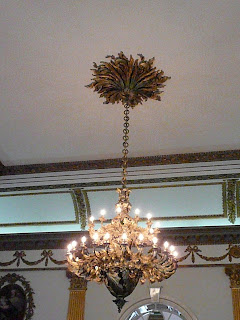After a nice continental breakfast, we caught the bus to Dublin. The hotel is conveniently located right next to a bus stop and it only takes 10 minutes to get to the city center. We walked from the bus drop off to the Chester Beatty Library.

The Chester Beatty Library is a public charitable trust established under the will of the late Sir Alfred Chester Beatty, which was granted probate in 1969. The role of the Library is to protect, preserve and make available to the public in the form of exhibitions, popular publications, lectures and other events the heritage enshrined in the collections of the late Chester Beatty.
Next door to the Chest Beatty Library is Dublin Castle. Dublin Castle was first founded as a major defensive complex upon the orders of King John of England in 1204, shortly after the Norman invasion of Ireland in 1169, when it was commanded that a castle be built with strong walls and good ditches for the defense of the city, the administration of justice, and the protection of the King’s treasure. Largely complete by 1230, the castle was of typical Norman courtyard design, with a central square devoid of a keep, bounded on all sides by tall defensive walls and protected at each corner by a circular tower. The building survived until 1673 when it was damaged by fire and demolished shortly afterwards. No trace of medieval buildings remain above ground level today, with the exception of the great Record Tower. It is the sole surviving tower of the original fortification, its battlements an early 19th-century addition.
The castle is a tourist attraction and, following major refurbishment, is also used as a conference center. During Ireland's presidencies of the European Union, including most recently in the first half of 2004, it has been the venue of many meetings of the European Council. The crypt of the Chapel Royal is now used as an arts center, and occasional concerts are held in the grounds of the Castle. The complex of buildings is usually open to the public, except during state functions.

I enjoyed looking at the ornate fixtures and the artwork. Everything is so grand and large.

